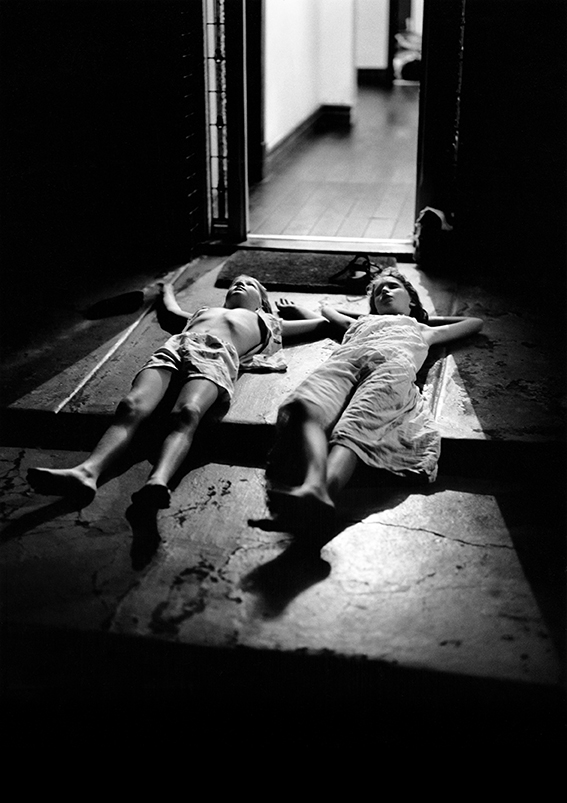Botman’s work portrays a wonderful life: playing children, a snow-covered meadow, a bat taking to the wing, a woman in the bath. Every image seems loaded with meaning, as if the artist photographs simple things that symbolise the big questions in life. His method is anything but everyday. His images always have an almost indefinable beauty, and a certain menace. He reproduces a world that is becoming increasingly rare, a world in which time appears to stand still, a world of feeling and sadness, unhurried and carefree.
Botman’s publications are like ‘books of life’. They feature a poetic symbolism expressed in the combination of images. In Heartbeat (1994), for example, he positions a portrait of his mother shortly before her death beside an image of raindrops on a window, and recalls elements like ‘child’, ‘woman’, ‘sex’ and ‘death’. His work is not linear, and it does not offer many explanations. This gives the viewer freedom to interpret and reflect.
Despite the powerful baryta prints, Machiel Botman’s photographs have an air of humility. Shunning trends in photography, he is above all a photographer who has always done his own thing. Botman is self-taught, and he mainly uses analogue techniques. He draws inspiration from, among others, photographers Dave Heath and Masahisa Fukase, and artist Constant Nieuwenhuys. He has amassed a considerable following of collectors and admirers, particularly outside the Netherlands.
The Hague Museum of Photography will be showing a selection of Botman’s work from the early days to the present day (1965 – 2012), including photographs from his books and a lot of work that has never been published. The exhibition will also feature some of his many book dummies, and a special catalogue will be published to accompany the exhibition.
The exhibition is being curated by Victor Levie and Machiel Botman. Levie (who designs exhibitions and publications for museums and photographers in the Netherlands and abroad) has been involved with Machiel Botman’s work and publications since the late 1980s.
